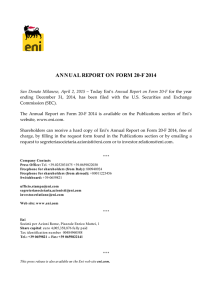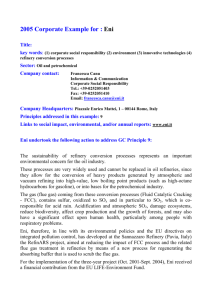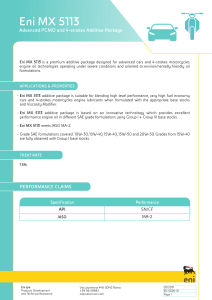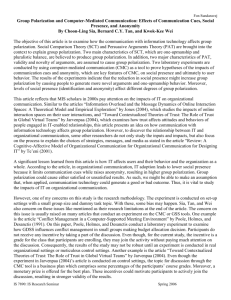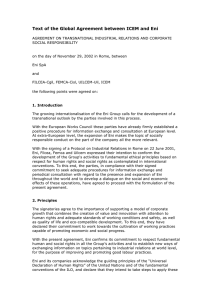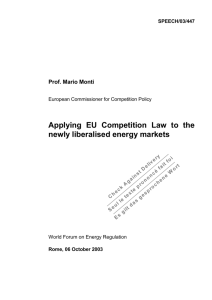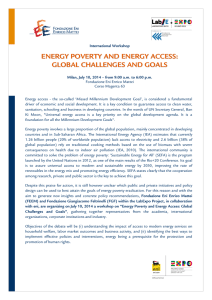A Cognitive-Affective Model of Organizational Communication for
advertisement
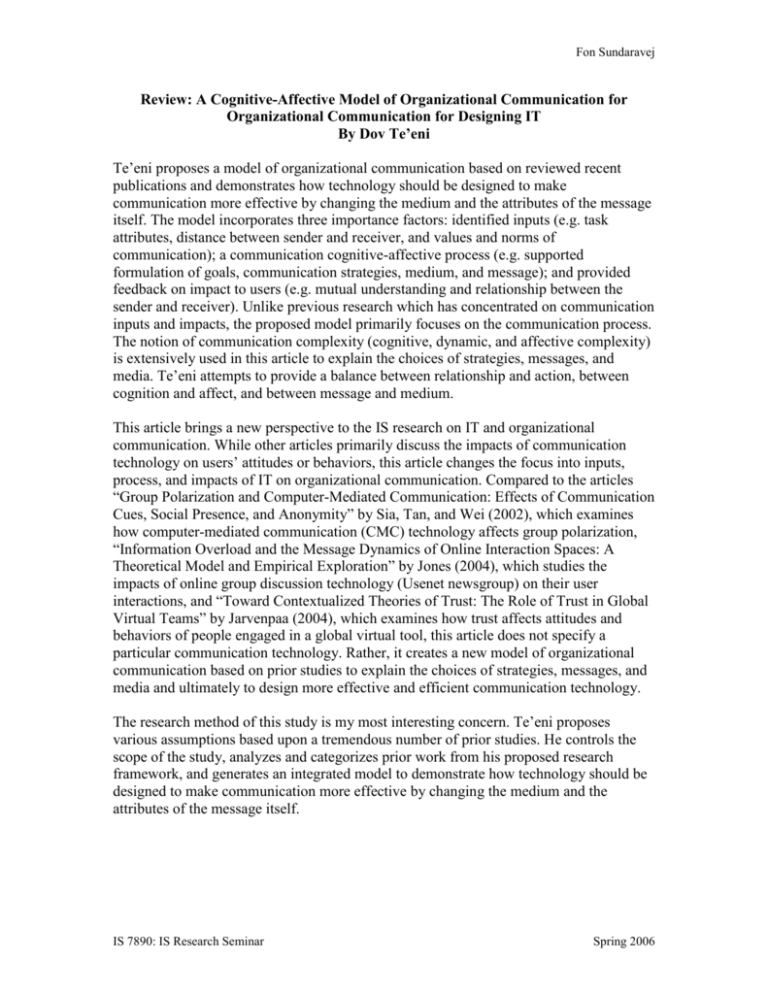
Fon Sundaravej Review: A Cognitive-Affective Model of Organizational Communication for Organizational Communication for Designing IT By Dov Te’eni Te’eni proposes a model of organizational communication based on reviewed recent publications and demonstrates how technology should be designed to make communication more effective by changing the medium and the attributes of the message itself. The model incorporates three importance factors: identified inputs (e.g. task attributes, distance between sender and receiver, and values and norms of communication); a communication cognitive-affective process (e.g. supported formulation of goals, communication strategies, medium, and message); and provided feedback on impact to users (e.g. mutual understanding and relationship between the sender and receiver). Unlike previous research which has concentrated on communication inputs and impacts, the proposed model primarily focuses on the communication process. The notion of communication complexity (cognitive, dynamic, and affective complexity) is extensively used in this article to explain the choices of strategies, messages, and media. Te’eni attempts to provide a balance between relationship and action, between cognition and affect, and between message and medium. This article brings a new perspective to the IS research on IT and organizational communication. While other articles primarily discuss the impacts of communication technology on users’ attitudes or behaviors, this article changes the focus into inputs, process, and impacts of IT on organizational communication. Compared to the articles “Group Polarization and Computer-Mediated Communication: Effects of Communication Cues, Social Presence, and Anonymity” by Sia, Tan, and Wei (2002), which examines how computer-mediated communication (CMC) technology affects group polarization, “Information Overload and the Message Dynamics of Online Interaction Spaces: A Theoretical Model and Empirical Exploration” by Jones (2004), which studies the impacts of online group discussion technology (Usenet newsgroup) on their user interactions, and “Toward Contextualized Theories of Trust: The Role of Trust in Global Virtual Teams” by Jarvenpaa (2004), which examines how trust affects attitudes and behaviors of people engaged in a global virtual tool, this article does not specify a particular communication technology. Rather, it creates a new model of organizational communication based on prior studies to explain the choices of strategies, messages, and media and ultimately to design more effective and efficient communication technology. The research method of this study is my most interesting concern. Te’eni proposes various assumptions based upon a tremendous number of prior studies. He controls the scope of the study, analyzes and categorizes prior work from his proposed research framework, and generates an integrated model to demonstrate how technology should be designed to make communication more effective by changing the medium and the attributes of the message itself. IS 7890: IS Research Seminar Spring 2006
